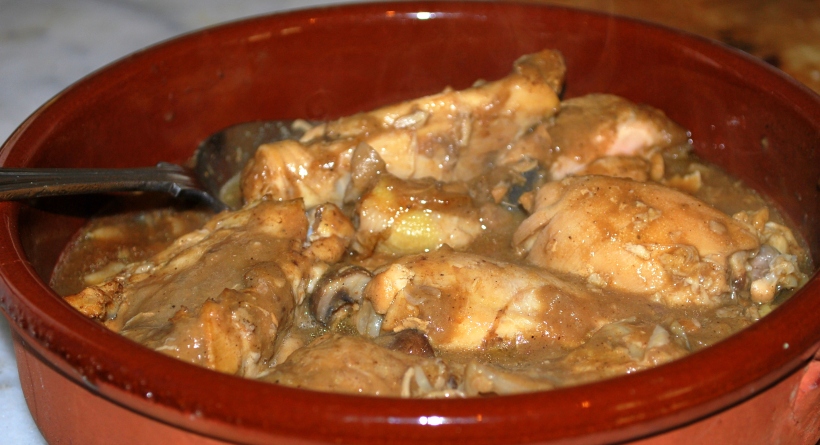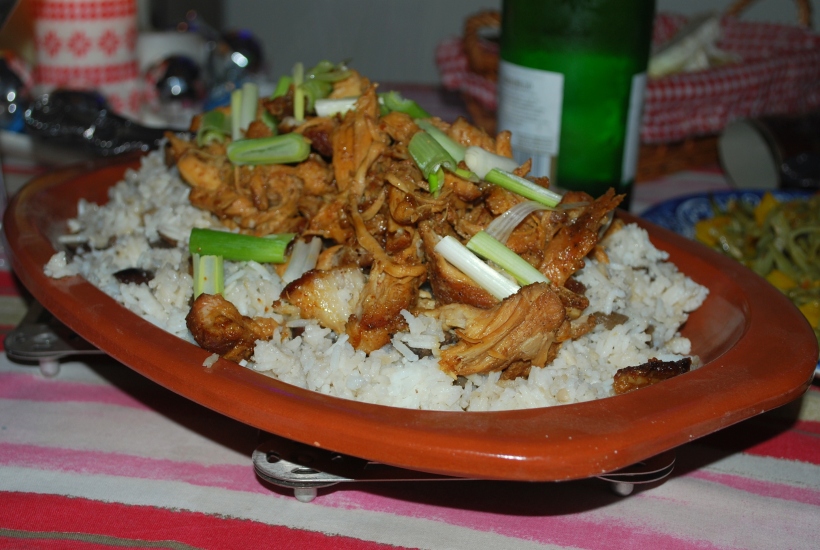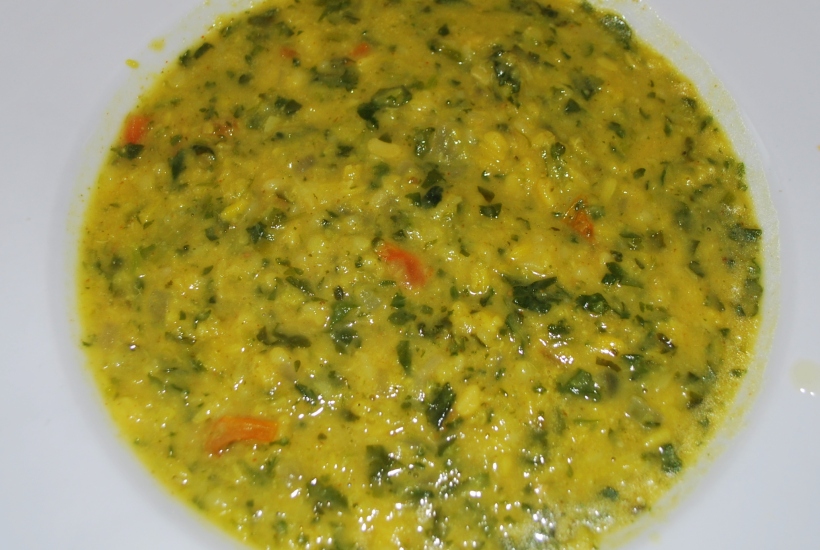We recently had a lovely Spanish Sunday lunch with family and friends. Lunch on Sunday in Spain, especially when the weather is good and you can cook outside, often means paella. Although it wasn’t warm enough to eat in the garden, we did manage some pre-lunch drinks in the sunshine and we fired up the paella burner to cook outside.

Starters were typical. Plates of jamón and cheese, lettuce with anchovies, croquetas and prawns to peel and dip in alioli.
Dessert caused me a little stress. Not making it, you understand. Just deciding what to make. Where we come from in Spain doesn’t claim to have the most exciting desserts in the world. Pretty much every restaurant will offer the same selection. Flan (which we know better as creme caramel ). Natilla (a little portion of cold custard with a biscuit similar to what is called a Rich Tea biscuit on top). Arroz con leche (cold rice pudding cooked with cinnamon and sprinkled with cinnamon). Fruit or ice cream. Hmmmm. Ok, but nothing to get over excited about. The fruit is usually pretty good and depending on the season you can enjoy figs, melons, peaches, custard fruit, pomegranate and strawberries.

Folk seem to get their sugar fix from turrón and the little cakes, pastries and doughnuts served after a meal with coffee. I asked Big Man for advice and he requested Leche Frita which is something his family used to enjoy when he was young. The ingredients are few and cheap. It’s not a sophisticated dish and I was a little unsure as to how my lunch guests would react. I was amazed at how well it went down. They enjoyed the lightness and simplicity of the dish and the delicate flavour of the custard (which is what you make from your milk). If you’re a person who finds stirring risotto therapeutic, this one’s for you as you can’t make it in a hurry.
Ingredients to serve six to eight people
- 800ml full fat milk
- A large slice of lemon zest
- A stick of cinnamon
- 80g cornflour
- 80-100g sugar (this doesn’t need to be very sweet)
- 2 eggs, beaten
- Vegetable oil for frying
- Icing sugar and cinnamon to dust the finished slices of Leche Frita
Pour the milk (reserving about 100 ml and return this to the fridge) into a saucepan with the sugar, lemon zest and cinnamon. Bring almost to boiling point, stirring to dissolve the sugar, remove from the heat then cover and leave to stand for 15 minutes.

Add the cornflour to the cold milk and dissolve. Remove the lemon zest and cinnamon from the infused milk and pour in the milk and cornflour. Heat very, very gently, whisking or stirring for about 20-30 minutes. You don’t want the milk to catch and burn while you thicken the milk. It’s ready when it has become very thick. Run a spoon through the middle of the mixture and if it doesn’t return quickly to the middle of the pan, you’re done!
Lightly oil a shallow square or rectangular dish with some vegetable oil and pour in the thickened milk. Smooth the surface and leave to cool in the fridge for an hour or so. Ideally it will be about 2cm thick.
Prepare a large frying pan with vegetable oil to a depth of about 2cm and heat the oil. Not quite as hot as for cooking chips, but a good medium heat. Have a tray lined with kitchen paper ready and in a bowl put about 4 tablespoons of icing sugar mixed with about half a tablespoon of cinnamon.

Tip the leche/custard out onto a tray or flat board and cut it into portions (I made triangles) and dip as many will fit into your frying pan in one go into the beaten egg. Make sure the pieces are well coated and put them onto a plate until you are ready to fry your first batch.
Put the egg coated pieces of leche into the hot oil and fry on each side (a couple of minutes) until golden brown. Place onto the kitchen towel and allow to cool while you cook the next batch.
When it’s cool enough to handle, dip each piece in the icing sugar and cinnamon mix. It can be served warm or cold and keeps well in the fridge (covered) for about 48 hours. Don’t expect it to be crispy, this is meant to be soft inside and out. You can reheat gently in the oven or microwave and sprinkle a little extra icing sugar over to serve. If you want to be a bit grand, make a fruit coulis to dip the pieces into. Lovely as a dessert or teatime treat and very typical of Andalucía.






























